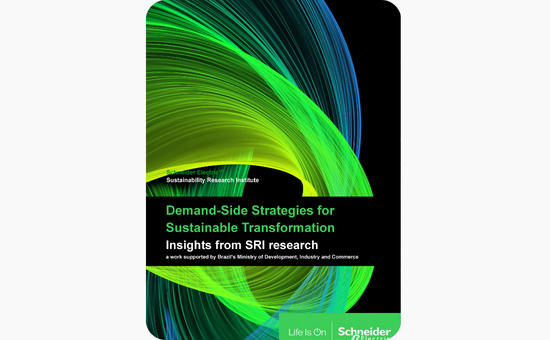Demand-side strategies for sustainable transformation
- By Thomas Alan Kwan & Vincent Petit
- 10 Sep 2025
- 3 min read
The path to net zero will not be won only on the supply side. Demand-side strategies—how energy is consumed, where it is used, and how industries adapt—hold the key to accelerating sustainable transformation. Our latest research shows that electrification, efficiency, and circularity together can unlock deep decarbonization while boosting competitiveness.
Past energy transitions were messy and unplanned, but the stakes are higher today. With energy responsible for 75% of global greenhouse gas emissions, targeting the demand side—efficiency, electrification, and new consumer behaviors—offers the fastest path to reduce emissions while supporting growth. Demand-led transitions can be more rapid, more inclusive, and more resilient than traditional supply-driven approaches.
Traditionally labeled “hard-to-abate,” industries like steel, cement, and chemicals are now demonstrating significant potential for direct electrification. Switching to electric motors, boilers, and low- to mid-temperature processes can double the share of electricity in industry’s energy mix from ~30% today to nearly 50%. Done right, this reduces fossil fuel dependence and can even cut production costs—especially when paired with flexible tariffs and renewable integration.
- E-ammonia: Electrified ammonia production, powered by onsite solar and wind, can slash both emissions and costs. Flexible systems that shift production to match low-price renewable hours show resilience and competitiveness.
- Green steel: By combining hydrogen-based direct reduction (H₂-DRI) with electric arc furnaces, green steel plants can cut emissions up to 80% while achieving cost advantages when hybrid grid-plus-renewables strategies are used.
These breakthroughs prove that demand-side innovation is not a cost burden but an economic opportunity.
GHG emissions of steel production vs grid intensity
The construction sector alone accounts for 39% of energy-related emissions. Circularity—using recycled materials, designing for efficiency, and substituting with low-carbon alternatives—could deliver up to 30% of industrial decarbonization potential. Tackling embodied carbon in steel, cement, and bricks early in the design phase transforms buildings from emissions drivers into sustainability enablers.
Governments and businesses can accelerate impact by:
Scaling electrification
with incentives and dynamic tariff structures.
Embedding circularity
into industrial and construction policy.
Supporting green hydrogen
for sectors like steel and fertilizers.
Targeting embodied carbon
through design-phase standards and material substitution.
Aligning industry with digital and energy infrastructure
so demand flexibility stabilizes renewable grids.
The report finds that demand-side strategies are not just climate-aligned—they are cost-competitive. Industries that electrify, digitize, and integrate circularity can strengthen resilience, protect consumers from volatility, and gain advantage in a net zero economy. The opportunity is to treat the demand side not as a constraint, but as the engine of sustainable transformation.
Download the full report: “Demand-Side Strategies for Sustainable Transformation” to explore pathways for electrification, circularity, and industry innovation.

Latest from the Sustainability Research Institute
Time to power: A generational cycle of modernization in the US
Introducing the integrated Net Present Value framework
Original insights on the decarbonization potential of Brazil through innovation
Demand-pull policy framework for emission intensive industries


